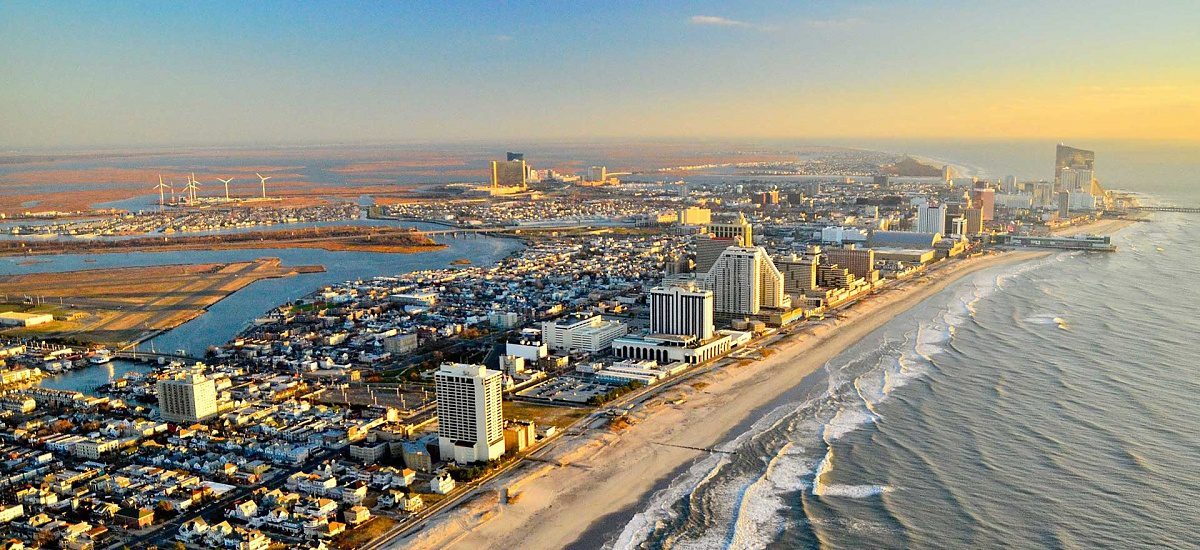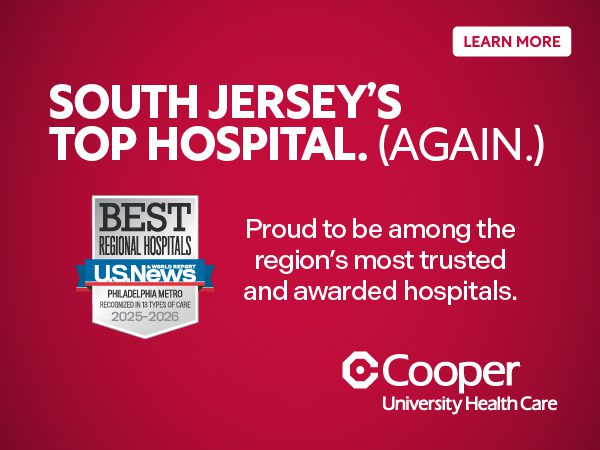Our hometowns here in SJ have undergone some major shifts over the last decade-and-a-half; most of them for the better. But while things may look different, these are still the towns we know and love.
Collingswood’s “Restaurant Row”
Evenings along Haddon Avenue in Collingswood are bustling with activity. Couples dine at sidewalk tables and families stroll past brightly lit stores while waiting to be seated at one of the eateries along “restaurant row.” The food-centric atmosphere has developed over the past 15 years under the watchful eye of Mayor Jim Maley. The town began courting restaurants in the mid-’90s, in an effort to bring back business after a period of economic decline.
“A big part of restoring the town was helping our business district,” Maley says. “One thing everyone agreed on was that restaurants would be a good focus, so we started by hosting a conference to sell ourselves as a destination for restaurants.”
The Mayor says the biggest hurdle Collingswood faced in reinventing itself as a dining destination was its status as a dry town.
“There were people who thought we should allow liquor licenses,” he says. “But I felt we’d be able to get more restaurants without it. We’d have been limited to three licenses, and you’re not going to have many BYOB places opening next to restaurants with bars.”
Maley was right, and by building personal relationships with South Jersey restaurateurs he has managed to draw more than 20 eateries to restaurant row. Visitors come to sample food from all corners of the world; there are establishments that specialize in Italian, Mexican, Japanese, Indian and Cuban cuisines.
While people from all over SJ flock to Collingswood for dinner, Maley says it’s the locals who keep business growing.
“In my mind, people have been regaining a small-town mindset,” he says. “People are looking less for going out in black tie. The trend now is hometown stuff, cities creating town centers, people staying close to home. It’s been a great run, and now we’ve got 200 additional households living on the avenue or oriented to the avenue, and new restaurants are doing nothing but feeding the need for more.”
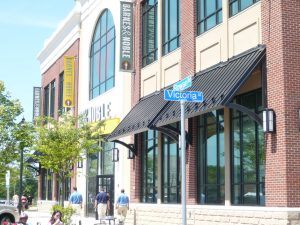
Voorhees Town Center mixes restaurants, retail and residential space
Mall Makeovers
Over the past 15 years, SJ’s malls have become epicenters of retail, dining and economic growth in their communities. Thanks to the efforts of Pennsylvania Real Estate Investment Trust (PREIT), the owner of Cherry Hill and Moorestown malls and Voorhees Town Center, all three establishments now boast world-class restaurants, salons and retail services.
It all began with Cherry Hill Mall, which underwent a $220-million remodel between 2007 and 2009. The renovation added 228,000 square feet of new retail space and accommodated a 138,000-square-foot Nordstrom anchor store. The mall’s interior got a complete makeover, its dated color scheme replaced with a contemporary, wood-and-marble look.
The mall’s facelift enticed new luxury retailers like Michael Kors, Henri Bendel, AX Armani Exchange, Steve Madden, J.Crew and BCBG Max Azria. All have leased space in the mall since the expansion was completed in 2009.
The remodel condensed the mall’s interior food court, but outside, new restaurants Seasons 52 and The Capital Grille cater to hungry shoppers.
While Cherry Hill Mall was being spruced up, PREIT was also revamping Voorhees Town Center, then named the Echelon Mall. When PREIT acquired the property, which is the second-largest mall in SJ after Cherry Hill Mall, it had a vacancy rate of nearly 75 percent.
PREIT broke ground on Voorhees Town Center at the beginning of 2007, demolishing two abandoned anchor stores, updating the mall’s interior and exterior, and constructing a landscaped boulevard that features restaurant, retail and residential space, in addition to a fitness center and Rizzieri Studio Salon.
In 2011, Voorhees became the third town in the country to move its municipal offices to a mall. Joseph Coradino, president of PREIT, said at the time the relocation of the town hall facilities to the mall’s second floor signified that the redevelopment, completed in 2010, had been successful.
“The addition of Town Hall as an anchor for our mixed-use project provides the synergy we were looking for,” Coradino said in a press release.
In 2007, Coradino started working on a plan to rehabilitate Moorestown Mall in much the same way he planned to ultimately rebuild Cherry Hill Mall and Voorhees Town Center. The first step was to bring in world-class restaurateurs, but getting around Moorestown’s longstanding status as a dry town wasn’t easy. Residents initially refused to approve a 2007 referendum allowing the sale of alcohol in town, effectively derailing PREIT’s plan to turn the mall, Moorestown’s biggest taxpayer, into a first-class destination.
In 2011, after several years of tax hikes, voters approved a referendum to allow four liquor licenses to be granted to full-service restaurants at the mall.
“Restaurants are the new anchors for malls,” Coradino said when the mall’s redevelopment project began in 2013. “They are tremendous traffic generators, and they don’t compete with mall stores. Bringing the liquor licenses, and thus fine-dining restaurants, was critical for the mall’s success moving forward.”
Three of those liquor licenses have been distributed to upscale dining establishments. In rapid succession, the mall welcomed Firebirds Wood Fired Grill, the first N.J. location of celebrated chef Marc Vetri’s Osteria and Distrito, the contemporary Mexican cantina of Iron Chef Jose Garces.
Today, there is more than just shopping and dining at Moorestown Mall. Last year, Rizzieri Salon & Spa moved from its longtime flagship location in Marlton to a 14,000-square-foot space on Boutique Row, a collection of high-end adjacent stores that draw affluent customers with a discerning fashion sense.
Downtown Glassboro’s Renaissance
Fifteen years ago, Glassboro was a town on the brink. The once-thriving community was experiencing a small-business exodus, and many worried that the future would be bleak.
“We were going the way of a lot of other small towns, because of malls and box stores popping up in the area,” says Mayor Leo McCabe. “Our town fathers realized we had to do something to bring back retail in the downtown area. What we realized is we needed to take advantage of Rowan being in Glassboro.”
McCabe found that Rowan University’s students had approximately $20 million in annual discretionary spending, and Glassboro was only seeing about 20 percent of that potential revenue. The school and municipality developed a partnership and a plan – the first step of which was the construction of Rowan Boulevard, a thoroughfare that connects the university to downtown Glassboro.
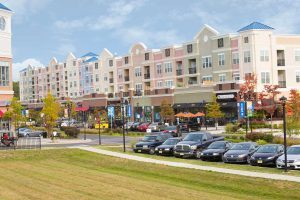
Rowan Boulevard features retail stores, restaurants and student housing
“All along Rowan Boulevard we wanted to have retail stores, restaurants and student housing,” McCabe says. “Our vision and Rowan’s fit together very well.”
The first thing built on Rowan Boulevard was a Barnes & Noble, which was originally designated as a student bookstore but soon expanded to serve the greater community. Next came housing for nearly 900 students and the Enterprise Center, a mixed-use building that is home to retail, offices and facilities for Rowan’s graduate and continuing education programs.
Bob Zazzali, vice president of Rowan University, says the town-university relationship was not always so mutually beneficial.
“There was us, and there was the town,” Zazzali says. “There wasn’t a lot of communication or cooperation, and the divide between us and the town was very distinct. I think there was a realization that if the town was going to be vibrant again, we had to work hand-in-hand. That’s really how it began. It was at once idealistic and practical. It’s always nice to get along with your neighbors, but the town also needed to rely on the fact that they have a substantial university.”
The municipality took a significant financial risk when it bought the land along Rowan Boulevard, but McCabe says they are already reaping the rewards.
“The debt we have from purchasing the land is being paid off very quickly,” he says. “And all these new buildings have become tax ratables. We’ve created 400 construction jobs, and we’re seeing a huge increase in the number of households moving in to Glassboro, which will add to the population and put more feet and more buying power on the boulevard.”
Rowan is growing by leaps and bounds as well. The present undergraduate population is roughly 10,000 students, and Zazzali expects that number to swell over the next decade.
“In 10 years, our goal is to be at 25,000 total students,” he says. “A lot of those students will be online students or in our medical or graduate programs.”
The next major collaborative project will take place on High Street, which is intended to become the town’s arts and entertainment district. Local advocates are also working to establish a light rail line that would bring riders from Glassboro to Camden, where Rowan has another campus.
Ultimately, McCabe says, the future of Glassboro and Rowan University is bright.
“What we’ve done in the past 15 years is start to build a vibrant college town with bustling shops and restaurants, plus arts and entertainment,” he says. “This has become a place to really be proud of.”
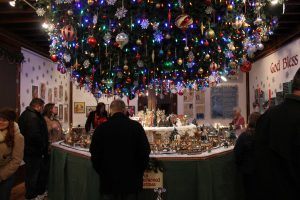
Cape May has become a year-round tourist destination
Weathering the Storm
In 2012, the Jersey Shore was devastated by Superstorm Sandy. The storm made landfall in Atlantic City on October 29, and recovery is still ongoing today.
The storm’s heavy rainfall and wind gusts as high as 100 mph damaged or destroyed 346,000 homes throughout the state, and 37 people were killed. Several counties in SJ were designated federal disaster areas. The December 2012 issue of SJ Magazine was devoted to coverage of the storm and its aftermath. In that issue, CBS3 meteorologist Kathy Orr called Superstorm Sandy “our Katrina at the Jersey Shore.”
The Shore has recovered substantially since the storm, and nowhere is that more evident than in Cape May, at the Mid-Atlantic Center for the Arts & Humanities (MAC). Susan Krysiak, communications coordinator at MAC, says the last 15 years have changed the way people think about a weekend at the Shore.
“One of our missions has been to provide activities, events, tours and historic sites to visit year-round,” Krysiak says. “We’ve really achieved that. We’ve extended our events to the shoulder seasons – spring and fall – and into the Christmas season.”
MAC hosts family activities, food and wine events, music festivals, ghost tours and historic visits from February to December.
“Our first event was over Presidents’ Day Weekend,” Krysiak says. “We brought people to the Shore on one of the coldest weekends of the year.”
Tourism suffered in the year following Superstorm Sandy, but Krysiak says in no uncertain terms, the Shore is back.
“We had a difficult time in the year or so after Sandy, but we are absolutely experiencing a resurgence and an uptick in visitors throughout the year,” she says. “I think that has proven to be a matter of people finally getting back on their feet. The nice thing about the Shore is it’s not just a place to go during the summer anymore. There’s a whole different feel to it during the winter, and people are being drawn here, even when it’s freezing.”
Tourism is not the only business that is booming at the shore. According to Al Natali, owner of Natali Vineyards in Cape May Court House, vineyards are the fastest-growing agricultural category in the state.
“The Cape May peninsula is in the process of becoming a designated viticultural area, just like Napa or Sonoma,” Natali says. “We have a moderate climate here and large bodies of water that take the extremes off the weather. We have higher lows and lower highs, and that’s good for the grapes.”
Natali, who purchased the land for his vineyard in 2000, says he has seen SJ’s winery business explode.
“When I started here, we were the third winery in the area. Now there’s six,” he says. “In the larger South Jersey region, called the Outer Coastal Plain, there were 12 and now there are 25. All over South Jersey, the number of vineyards and wineries has doubled in 15 years.”
Natali attributes that growth to the residents of SJ, who he says are big wine-drinkers.
“On a per-capita basis, New Jersey is the highest wine-consuming state in the country,” Natali says. “And the municipalities are getting in on it too. I’ve gone to events in Haddonfield, Medford, Mays Landing, all over the place, where the key attraction is inviting the local wineries.”

